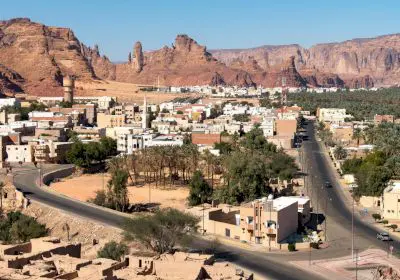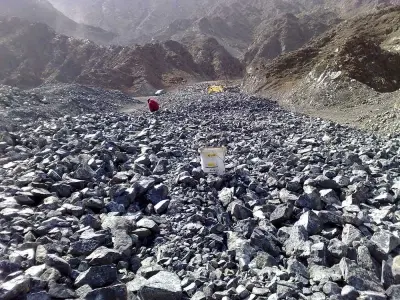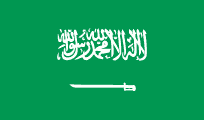Minerals Prices in Saudi Arabia
Saudi Arabia is the largest country in West Asia and is one of the largest producers and exporters of crude Oil in the world. Scientists have identified over 4000 minerals of the earth's crust. Air and Rail transport ways are a major role in the Saudi Arabia's trade. Substances that are formed based on natural processes are called minerals. The customs inspector places the consignment (passenger) on the inspection device and all Saudi lines are responsible for keeping the cargo in storage. Minerals can be identified by their physical properties, such as hardness, color, appearance (luster) and odor
Add your import and export orders to this list
Warning: Undefined variable $formTitle in /home/anbar/domains/anbar.asia/anbar/inc/html/desktop/orderform.php on line 10
Warning: Undefined variable $marketName in /home/anbar/domains/anbar.asia/anbar/inc/html/desktop/orderform.php on line 12
Warning: Undefined variable $location in /home/anbar/domains/anbar.asia/anbar/inc/html/desktop/orderform.php on line 12
If you want to trade in the , please join in Anbar Asia. Your order will be shown here, so the traders of contact you

Saudi Arabia is rich in natural resources such as gold and copper, crude Oil, natural gas, and iron. Some minerals can be detected by a little more features than the naked eye. Saudi Arabia is the 18th largest economy in the world and the largest economy in the Middle East and North Africa. Providing quality material has a huge impact on your reputation as a trader
- Saudi Arabia Hematite Market
- Saudi Arabia Chalcopyrite Market
- Saudi Arabia Coal Market
- Saudi Arabia Galena Market
- Saudi Arabia Cassitrite Market
- Saudi Arabia bauxite Market
- Saudi Arabia Sphalerite Market
- Saudi Arabia Chromite Market

Substances that are formed based on natural processes are called minerals. They are characterized by following the conditions and structures of nature, but organic mines "have the structure, organs and conditions of a living agent" It is also obtained.
Read More ...
The country is rich in natural resources such as gold and copper, crude Oil, natural gas, and iron. However, in terms of forests and forest areas, deforestation and agriculture are poor. Most plants grow in oases. With more than 260 billion barrels of Oil, Saudi Arabia holds more than 14% of the reserves of this vital substance.
Read More ...
Chromite is found as stone in nature. This stone is also known as chromite and contains chromium oxide with the formula FeCr2O4. Chromite occurs in mineral deposits and veins and may be found in the ground as small particles or larger deposits. Accumulations of chromite are found in some regions of the world including South Africa, Albania, Kazakhstan, Turkey and India.
Read More ... Saudi mineral potential: A shift in national policy to diversify into non-oil resources has prompted domestic development and overseas interest in Saudi Arabia’s considerable wealth of untapped industrial minerals . Saudi Arabia is undergoing a major transformation in its development of natural resources. Saudi Arabia has recognised the importance of the minerals and mining sector, with special emphasis on industrial minerals. There are enormous tapped and untapped industrial minerals resources in the country which could contribute to the country’s revenue and provide a strong base for Domestic and overseas interest in the mineral potential of Saudi Arabia is growing, as evidenced by a recent workshop attracting the likes of Imerys, Carmeuse, Dorfner, Hosokawa, and Outotec (see later). A new Mining Code introduced in 2004 also facilitated a more attractive climate to foreign investment in the minerals sector. Saudi Arabia’s industrial minerals industry is composed of many small and medium sized operations producing construction materials (eg. Other operations produce minerals for ceramics and glass, salt is also produced and sulphur as a by-product of oil refining (see table). There are also captive producers of minerals. Construction, glass, and ceramics remain established and important markets for the country’s minerals. Mineral wool is also produced in Saudi Arabia, about 39,000 tonnes in 2005, which consumes basalt and limestone. With regard to filler minerals, for example, Gulf Cooperation Council countries have seen a massive growth in polymer production in recent years which is expected to continue. Saudi Arabia is the region’s dominant player, with a new 175,000 tpa plastic compounding facility, and two PP plants (700,000 tpa combined) being constructed at Rabigh. In 1997, the Saudi Arabian Mining Co. Infrastructure development is key to boosting the mining sector in Saudi Arabia, and is critical to two main projects. Plans have been implemented for a new 1,408km northeastern railway line to link Riyadh with the mineral rich northern region including Al Jalamid, Qassim, Hail, and Al Jawf. Tertiary Minerals Plc is evaluating the Ghurayyah rare minerals deposit, containing tantalum, niobium, rare earths, zirconium, and yttrium. Earlier this year, US fused minerals producer, Washington Mills Electro Minerals Corp. Potential areas highlighted by the Saudi Geological Survey (SGS) for “large scale investing in Saudi Arabia’s minerals sector include the manufacturing of silica based products such as resin-coated sand (foundry sand), frac sand (oil and gas drilling), fumed silica, and fused silica. As part of the drive to highlight Saudi Arabia’s minerals development and potential, the SGS, in collaboration with the Deputy Ministry of Mineral Resources (DMMR) and the Saudi Arabian General Investment Authority (SAGIA) organised a special workshop in Jeddah on 9 March 2009: Workshop – Investment Opportunities in Saudi Industrial Minerals. Opening the workshop at the lecture hall of the SGS Jeddah office, Dr Zohair Nawab, president of the SGS, welcomed delegates and reinforced the importance of industrial minerals development as part of the country’s policy to diversify its natural resource programme. The day progressed with eleven presentations from leading experts covering Saudi industrial minerals investment, exploitation, and potential, limestone, processing of silica sand, co-operation with Malaysia, innovations in comminution, Egyptian minerals, and the outlook for silica. The workshop keynote address by Mike Editor IM, UK, was entitled “Global trends in the industrial minerals industry: opportunities and challenges. The author then highlighted how these trends could lead to market opportunities, and in particular, how they could benefit the development Saudi industrial minerals. Chris Spencer, independent minerals consultant, UK, provided an interesting review of industrial minerals exploration in Saudi Arabia in his paper “A brief history of industrial minerals exploration in Saudi Arabia”. Exploration began in the mid-1960s, and was low key, focusing on construction materials near Riyadh, Jeddah, and Dharhran. The National Mineral Policy 2, recently launched in Malaysia, and how lessons learned from its implementation could assist Saudi Arabia, was just one of the topics of between Malaysia and Saudi Arabia in mineral resource by Dr Mohammed Ajib Anuar, president, and Muhamad Nor Muhamad, executive director of the Malaysian Chamber of Mines, Malaysia. Limestone as aggregate, FGD material, or GCC for plastics is an important resource of Saudi Arabia. The subject of high purity limestone was the theme for Clive Mitchell, industrial minerals specialist, British Geological Survey, UK, in his paper “High purity limestone assessment: from mine to market. Mian Habib, advisor, industrial minerals, Saudi Geological Survey, Saudi Arabia, switched the silica theme from processing to market applications with this paper “Silica: today’s raw material for high tech industrial products. ” Habib described how conventional exploitation of silica sand in Saudi Arabia had been for only the glass and construction industries. ” Segovia outlined several advantages of this method of grinding, including: selective fragmentation, complete liberation of minerals, reduction of work index of treated rocks, minimal production of fines, low contamination, and minimal maintenance. In their paper “Recent advancements in mineral by Jim Sadowski, director Technical Services, and Peter Dunn, business development director, Minerals Processing, Physical Separation, Outotec (USA) Inc. The paper also discussed test work conducted on a sample of from Saudi Arabia. Some interesting light was shed on work being conducted on some Egyptian minerals. Dr Nagui Abdel-Khalek, chairman of the Minerals Technology Dept. Dr Abdel-Khalek described the efforts of the CMRDI to produce such added value minerals in Egypt. Saudi geology & industrial minerals. Saudi Arabia occupies an area of more than 2m. The Precambrian rocks contain most of Saudi Arabia’s known metallic deposits of gold, silver, copper, zinc, iron, and magnesium. The Phanerozoic cover contains the oil resources and deposits of bauxite, phosphate, clay, limestone, silica sand, and lightweight aggregate that are becoming of increasing importance to the industrial development of Saudi Arabia. Saudi Arabia industrial minerals production, trade & consumption (tonnes). One of the primary minerals being pushed for development in Saudi Arabia is silica sand and quartz. , at Riyadh. has been one of the leading suppliers of silica sand to glass plants in Riyadh, Jubail, and Jeddah. However, it has only been in the last two years that Al-Doghom has been producing silica powder from its new plant in Riyadh, utilising grinding equipment supplied by Hosokawa Alpine AG, Germany. But not only silica sand, but also all kinds of minerals that what we have in Saudi Arabia. The main challenge is to keep producing a good quality product made from minerals not only for Saudi Arabia but also for GCC [Gulf Cooperation Council] capitals. The timing and strategy of one of Saudi Arabia’s newcomers to the minerals sector appears most apposite. (UMIC) is a Saudi Arabian private company founded in 2004 by a group of businessmen and to pursue opportunities in the non-oil natural resources sector. The company’s goal is: “To develop cost-effective import substitutes for its Saudi Arabian customers and to supply customers in neighbouring UMIC supplies customers in Saudi Arabia and plans to supply customers in the United Arab Emirates, Kuwait, Italy, and Spain. UMIC’s Feldspar Project is located in the southern part of Saudi Arabia, about 550km south-east of Jeddah and 200km north-west of Abha, in Asir province. UMIC’s Quartz Projects are located in Asir province, in the south-west part of Saudi Arabia, where two hydrothermal quartz deposits are licensed for mining by UMIC. Yanbu is in the west of Saudi Arabia, on the Red Sea Coast, about 400km north of Jeddah.
Read More ...
Saudi Arabia is a part of the Middle East located between the Red Sea and the Persian Gulf. Saudi Arabia’s key natural resources include petroleum, natural gas, gold, copper, and iron ore. Nearly six million foreign workers are employed in the petroleum and oil industry of Saudi Arabia. Saudi Arabia has nearly one-fifth of the world's proven petroleum reserves. The map of Saudi Arabia. (MGBM) and Saudi Company for Precious Metals are involved in exploration activities to locate precious metals and related minerals at many sites. MGBM currently operates five gold mines in Saudi Arabia and since 1988 has produced more than 4 million ounces of gold. KEFI Minerals, a gold and copper exploration company, has claimed to have located high grade gold and silver in the country after conducting several surveys. Mahd ad Dahab, which means Cradle of Gold, is one of the oldest mining sites in Saudi Arabia. of Saudi Arabia agreed to handle the Wadi Sawawin iron ore project. The petroleum industry of Saudi Arabia accounts for 80% of its budget revenues, 90% of its export earnings, and 45% of the GDP. Natural gas production in Saudi Arabia has been steadily increasing. Saudi Arabia has taken several key measures to attract foreign funding. According to experts, Saudi Arabia will continue to be the most significant supplier of petroleum to meet the global demand. 2010-sa. Saudi Arabia: Mining, Minerals and Fuel Resources. "Saudi Arabia: Mining, Minerals and Fuel "Saudi Arabia: Mining, Minerals and Fuel Saudi Arabia: Mining, Minerals and Fuel Resources.
Read More ...
Saudi Arabia’s mining sector continues to expand and provides a growing opportunity for U. Recent changes in Saudi Arabia’s mining laws have created conditions which allow greater access for foreign investment in the Kingdom’s mining sector. The new laws allow for companies to work either with Saudi’s parastatal Saudi Arabian Mining Company (Ma’aden) or through joint ventures with local companies. Furthermore, there are sizable domestic, regional and neighboring markets in the Middle East and Asia for high grade, industrial raw materials from Saudi Arabia. Saudi Arabia offers medium risks to investors with a quality transportation network, low utilities costs, low crime rates, and limited employment costs due to the lack of an official minimum wage. 6 billion investment operating at two primary sites: Al Jalamid in northern Saudi Arabia, home to a phosphate mine and beneficiation plant; and the Eastern Province’s Ras Al Khair, where their integrated chemical and fertilizer facility is based. In 2009, Ma’aden established a joint venture with Alcoa, the world’s third-largest aluminum producer, to build an efficiently integrated aluminum project in Saudi Arabia. Ma’aden operates six gold mines in western Saudi Arabia, including the Ad Duwayhi mine which began commercial production in 2017, and produced 275,000 ounces in 2018. Saudi Arabia requires mineral processing technology, equipment, and proven expertise to develop mineral-based manufacturing. Industrial minerals targeted for mining include: . Saudi Arabian Mining Company: http://www. Consulate General Jeddah, Saudi Arabia, Email: haisum.
Read More ...
In 1931 King Abdulazziz al-Saud, the founder of the modern Kingdom of Saudi Arabia, appointed a geologist to investigate the possible existence of oil and minerals in national territory. Saudi Arabia possesses more mineral resources than any other country in the Gulf region. The Kingdom of Saudi Arabia possesses large deposits of various minerals including bauxite, copper, gold, iron, lead, silver and tin as well as non-metallic minerals. The mining sector in Saudi Arabia is regulated by the Deputy Ministry for Mineral Resources (DMMR), an independent agency within the Ministry of Petroleum and Natural Resources. In 1997 the Kingdom established the Saudi Arabian Mining Company (Ma'aden) in order to regulate mineral exploration and mining. The company is active in gold, industrial minerals, phosphate, aluminium, infrastructure and has a joint venture with Sahara Petrochemicals Company to produce ethylene dichloride, caustic soda and other chemicals. Saudi Arabia is a gold exporter and mines 150,000 ounces per year. The company is evaluating the potential of several industrial minerals and base metals deposits with the intent to expand its mineral portfolio. Some of the industrial minerals under investigation include refractory clays, low-grade bauxite, kyanite, graphite, pure limestone for Ground Calcium Carbonate (GCC) and Precipitated Calcium Carbonate (PPC) products, potash in near-surface brine aquifers, REE and iron ore. The development of the mining sector occupies a prominent position in Saudi Arabia's program of diversifying its economy away from oil. The strategy includes establishing industries for extracting and processing the minerals, developing the transportation infrastructure to make the minerals accessible for processing and streamlining export procedures. Non-oil mineral activity in Saudi Arabia is expected to grow at a rate of 10% per annum. Setting up a mining company requires an additional licence from the Saudi Arabian General Investment Authority. The operator, the Saudi Arabian Railways Company, is a commercial company and the route will be open for other customers as well. Oman's mineral resources, though modest in comparison with Saudi Arabia, include chromite, copper, dolomite, zinc, limestone, marble, gypsum, silicon, gold, cobalt and iron. The vast non-metallic minerals wealth is recognized worldwide. Since 1996, production of rocks and minerals has increased eight fold. In the metallic minerals sector, a concession holder is planing to mine copper at Shinas and Liwa. Several industries have grown up around them as part of the national development process, which, in turn, have boosted the minerals sector's contribution to the nation's GDP as well as providing jobs for Omanis. Gold in particular has great potential in Oman, which is the only Gulf country with substantial gold reserves other than Saudi Arabia. The mining law allows the private sector to invest in mineral industries and explore for minerals. As in Saudi Arabia, joint ventures are a useful vehicle to enter the mining sector. As in Saudi Arabia, Oman presents a significant opportunity in the sector that should not be ignored.
Read More ...
The Middle Eastern Kingdom of Saudi Arabia straddles the Arabian Peninsula, bordered by Jordan, Kuwait and Iraq in the north and Oman and Yemen in the south. Saudi Arabia has a population of over 35 million, more than seven million of whom live in the capital, Riyadh. Saudi Arabia per cent of the world’s proven petroleum reserves. Saudi Arabia is a Founder Member of OPEC.
https://www.trade.gov/knowledge-product/saudi-arabia-mining-and-mineralshttps://www.azomining.com/Article.aspx?ArticleID=102
https://www.indmin.com/Article/2209272/Saudi-Arabia-minerals-review.html

